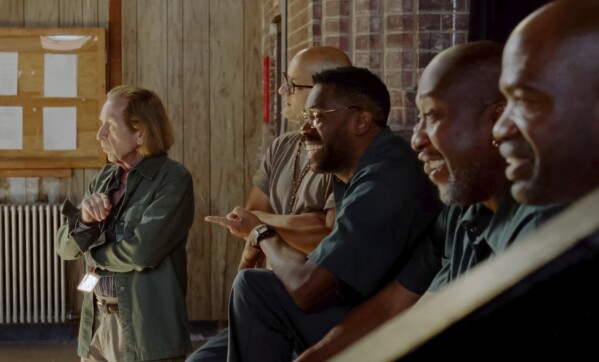Greg Kwedar’s “Sing Sing” initially premiered at the 2023 Toronto Film Festival. Due to a confusing distribution strategy from A24, however, it took until January of this year to arrive in Greenville, South Carolina.
It’s a shame because the film is widely celebrated, currently sitting at 97% on Rotten Tomatoes and a 4.3 on Letterboxd. It even got a few Oscar nominations. A film as highly praised as “Sing Sing” should have had a wider release earlier in 2024.
The film takes place in the Sing Sing Correctional Facility, located in Ossining, New York. It stars Colman Domingo as John “Divine G” Whitfield, a man sentenced for a murder he did not commit, and dramatizes his role in the prison’s Rehabilitation Through the Arts program as they stage their original production, “Breakin’ the Mummy’s Code.”
“Sing Sing” is based on the true story of the prisoners in the RTA program, and the most remarkable aspect of the film is that most of the inmates play themselves, which lends the film a feeling of authenticity and uniqueness.
The performances across the board shine. Colman Domingo is, of course, stunning. The veteran actor has a magnetic presence that commands the screen, and he acts with a rare tenderness. He constructs a performance that is easy for viewers to empathize with, resulting in many great emotional moments.
Clarence “Divine Eye” Maclin is another standout performance. He plays himself, a guarded new member of the RTA program. Maclin and Divine G initially do not get along, but over the course of the story the two form a close bond.
Maclin excels in his cinematic acting debut, and he and Domingo exude chemistry.
Early on in “Sing Sing”, there is a sequence where the RTA program holds auditions for their new play. Many of the inmates are featured in the sequence, auditioning for the role they want in the production. The sequence captures the essence of the film, as it demonstrates the inmates’ love for the art form.
The close-up shots of the men’s faces emphasize these emotions. Only showing their faces lends a sense of freedom — or even escape — to these performances. Occasionally, the close-ups cut to wide shots, displaying the inmates’ jumpsuits and the sterile prison walls, reminding the audience of their incarceration.
There are a plethora of similar moments sprinkled within the film that display the warmth the men find within art, and the coldness they encounter in prison. Despite the bleak setting, the film cultivates a hopeful and inspirational tone, shown through the joy that art — theater in this case — can bring to people.
“Sing Sing” is not only a great prison drama, but a great love letter to art.









